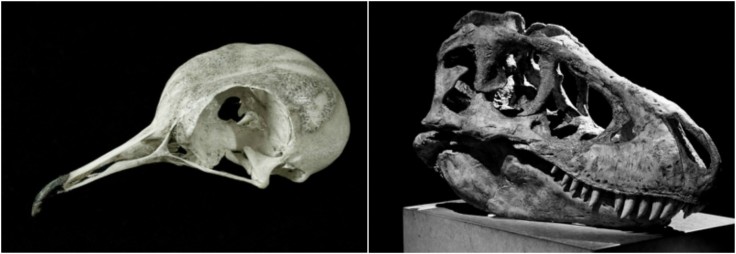
It's widely known that birds of today have evolved from their dinosaur ancestors, but precisely what made these gigantic and fearsome creatures, shrink down to small and agile avians? Scientists have recently discovered in a study that it could be to have a more significant brain-body ratio.
Using modern technology and equipment, experts were able to reconstruct 3D samples of extinct dinosaurs and birds, as well as the birds of today. The models were detailed in the Current Biology journal.
An interesting relationship between past and present
The study found that birds and non-avian dinosaurs had similarly-sized brains before the events of the massive asteroid driving them into extinction during the Cretaceous Period. When the giant dinosaurs died out, studies revealed some of the remaining birds evolved larger brains faster.
This phenomenon could explain the sudden surge of species of birds as the new kinds of avians replaced the roles left by the reptilian creatures.
Curator of science at the Bruce Museum in Connecticut and lead author of the study Daniel Ksepka said the findings were quite perplexing, especially the relationship they found about brain size to body size. The results pointed towards small body size being favored as a significant factor in evolving larger brains.
Ksepka also stated the fact that most bird families have had success in evolution by reducing their size while keeping their brains nearly constant or the same size as their giant ancestors.
The process in which they got their data, though, was relatively straightforward on paper, they took CT scans of different birds and dinosaurs to create 3D models.of their skull cavities. These models enabled the researchers to have a hands-on experience with studying the structure and size of the skulls and of the contents they would have held--the brain.
The scientists then compared these data to the current ones they had about the measurements for modern avians. The experts analyzed the relationship and effects of body size on brain evolution for different species of both dinosaurs and birds.
Amy Balanoff, a co-author of the study from Johns Hopkins University, explained the tests revealed no clear or significant differences between the brain sizes of dinos and avians. She also added, "Birds like emus and pigeons have the same brain sizes you would expect for a theropod dinosaur of the same body size, and in fact, some species like moa have small-than-expected brains.
What's the current trend?
The catastrophic event that led to the demise of the dinosaurs prompted the quick evolution of a plethora of different species of birds that grew their brains. A few species, though, such as parrots and corvids, which include the elusive crows and ravens, have only recently started to evolve for the better.
A study conducted recently revealed that corvids have begun evolving larger brain sizes to better adapt to living in cities to improve their cognitive abilities.
Jeroen Smaers, another co-author of the study, said that crows are the new species of the bird kingdom. They have gained larger brains through the centuries to help cope with the ever-changing environment.









